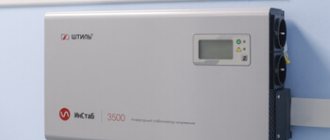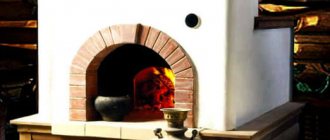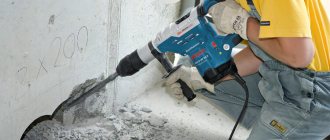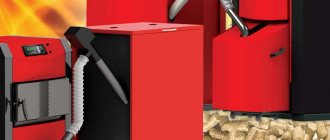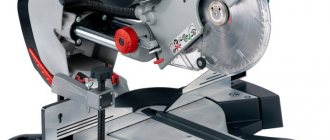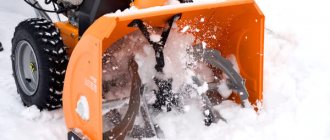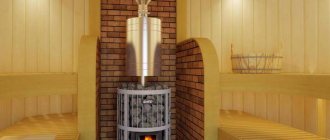The option of purchasing a solid fuel boiler for autonomous heating of premises often becomes one of the best options due to its simplicity and reliability.
However, choosing a unit is a non-trivial process. To make your task easier, we have compiled a rating of the best solid fuel boilers with a water circuit.
When selecting models, we took into account the opinions of experts and installation specialists, user reviews and technical characteristics of the devices.
Here you will find only the best models in terms of price/quality ratio.
Rating of the TOP 15 best solid fuel boilers with a water circuit in 2021
| Place | Name | Price |
| TOP 4 best solid fuel boilers with a water circuit in price/quality ratio for 2021 | ||
| 1 | Teplodar Cooper Praktik 8 single-circuit | Find out the price |
| 2 | ZOTA Yenisei 14 14 kW single-circuit | Find out the price |
| 3 | Lemax Forward-16 17 kW single-circuit | Find out the price |
| 4 | Teplodar Uyut-10 10 kW single-circuit | Find out the price |
| TOP 4 best solid fuel boilers with a water circuit and electric heating element | ||
| 1 | Teplodar Kupper Praktik 14 14 kW single-circuit | Find out the price |
| 2 | Teplodar Kupper OK 15 15 kW single-circuit | Find out the price |
| 3 | Teplodar Kupper Expert-15 single-circuit | Find out the price |
| 4 | Teplodar Kupper OVK 18 18 kW single-circuit | Find out the price |
| TOP 4 best cast iron solid fuel boilers with a water circuit | ||
| 1 | Krontif Siberia 60 single-circuit | Find out the price |
| 2 | Kentatsu MAX-04 38 kW single-circuit | Find out the price |
| 3 | Sime SOLIDA EV 6 56 kW single-circuit | Find out the price |
| 4 | Krontif Siberia 30 single-circuit | Find out the price |
| TOP 3 best solid fuel boilers with a water circuit using wood | ||
| 1 | ZOTA Box 8 8 kW single circuit | Find out the price |
| 2 | Teplodar Kupper OK 9 9 kW single-circuit | Find out the price |
| 3 | Lemax Forward-12.5 13 kW single-circuit | Find out the price |
4.4. Steel hot water boilers of the KV-TSi series KV-TSV
Hot water boilers of the KV-TS series with a layered method of burning solid fuel are produced with a heating capacity of 4; 6.5; 10; 20; thirty; 50 Gcal/h (4.7; 7.5; 11.7; 23.4; 35 and 58.5 MW). Boilers of this series are intended for installation at thermal power plants, in industrial heating and heating boiler houses. Water heating boilers of the KV-TSV series differ from boilers of the KV-TS series only in the presence of an air heater.
All hot water boilers of both these series have combustion screens made of pipes with a diameter of 60 x 3 mm. Convective bags in them are made from pipes with a diameter of 28 x 3 mm. The boilers are equipped with chain return grates with pneumomechanical fuel throwers.
Hot water boilers KV-TS-4 and -6.5 have a convective shaft (Fig. 4.3) with a heating surface and a combustion chamber
Rice. 4.3. Water heating boilers KV-TS-4 and -6.5 :
1 - window for the exit of combustion products from the combustion chamber; 2 - convective shaft with heating surface; 3 - nozzle for returning fuel carryover to the chain grid; 4 - slag bunker; 5 - reverse chain grille; 6 — pneumomechanical fuel thrower; 7 — fuel bunker; 8 - combustion chamber
camera; GHG - combustion products
Fuel (coal) from the hopper 7 is supplied to the return chain grid 5 by means of a pneumo-mechanical spreader. Air for fuel combustion is supplied by a fan into the ducts, through which it is sectioned and supplied under the chain grate. The fuel combustion products from the combustion chamber enter the convective shaft through the upper openings in the rear wall of the combustion chamber (windows). The heat of the GHG is perceived by convective heating surfaces in convective shaft 2, and cooled GHGs are removed from the boiler through a gas duct located in the lower part of the convective shaft. With the GHG flow Fuel is partially carried away from the combustion chamber; to catch it, a special fan is installed in the convection shaft bunker, which returns the carried away fuel through the nozzles to the combustion chamber onto the chain grate.
equipped with chain return grids 7 of different lengths and two pneumomechanical fuel throwers. In the rear part of the combustion chamber there is an intermediate shielded wall 6, forming an afterburning chamber. The screens of the intermediate wall are made of two rows. The side walls of the combustion chamber, as well as the convection shaft, have lightweight lining. The front wall of the combustion chamber is not shielded and has heavy lining.
The front and rear walls of the convection shaft are shielded. The front wall of the convective shaft, which is also the rear wall of the combustion chamber, is made in the form of an all-welded screen, turning into a four-row scallop at the bottom. The side walls of the convective shaft are closed with vertical screens made of pipes with a diameter of 83 3.5 mm.
Combustion products enter the convective shaft from below and pass through the festoon. The shaft contains packages of convective heating surfaces made in the form of horizontal screens. Collected fines and unburned fuel particles are collected in ash bins under the convective shaft and, through the entrainment return system, are thrown into the combustion chamber through pipeline 5. In the front part of the return chain grate 7 there is a slag hopper, where slag is dumped from the grate.
The supply of network water to the boiler is carried out through the lower collector of the left side screen, and the output of hot water is through the lower left collector of the convective shaft.
For burning wet brown coals, boilers of the KB-TS series can be supplied with air heaters that provide air heating to 200...220 °C.
The water heating boiler K.V-TS-50 has a screened combustion chamber (Fig. 4.5), a chain return grate to which fuel is supplied by four pneumo-mechanical throwers. The rear screen of the combustion chamber at the entrance to the rotary chamber is opened into a four-row festoon. The walls and slopes of the rotary chamber, and Also, the rear wall of the convective shaft is shielded with pipes with a diameter of 60 x 3 mm. Convective heating surfaces are made in the form of U-shaped screens made of pipes with a diameter of 28 x 3 mm, which are welded to vertical pipes with a diameter of 83 x 3.5 mm, forming screens for the side walls of the convective shaft.
Behind the boiler there is a two-pass tubular air heater in the form of two cubes made of pipes with a diameter of 40 x 1.5 mm. The boiler is equipped with a fan 7 and devices for returning fuel carryover from the ash bins under the convective shaft and under the air heater to the grate. Secondary sharp blast is carried out through nozzles located on the rear wall of the firebox using a fan. The slag produced by burning fuel is dumped into the mine. To clean convective heating surfaces, a shot cleaning device is provided (shot cleaning unit 5).
How to choose a solid fuel boiler?
The choice of a solid fuel boiler should be accompanied by taking into account the following points:
:
- The heating area is the main characteristic when choosing a boiler unit, usually at the rate of 1 kW per 1 sq.m., however, it is better to take into account not the area, but the volume of the room.
- Types of fuel - not all modern models, like the good old stoves, are omnivorous in terms of fuel. Some options are also very sensitive to it and will not only not provide the specified characteristics, but will also create problems in operation, or even fail altogether.
- Energy independence - of course, most solid fuel boilers are independent of electricity, but pellet options are equipped with electronics that require uninterrupted power.
Design Features
Boiler equipment of this type, in fact, is a slightly modified version of standard boilers - the design additionally includes a water circuit.
The design includes:
- firebox;
- grate;
- ash chamber;
- water circuit.
Construction of a solid fuel boiler
If single-circuit models are intended only for heating rooms, then double-circuit models are used both for heating the building and for supplying it with hot water.
Advice. Before purchasing a dual-circuit model, you should calculate the power that will be spent not only on heating the room (about 1 kW per 10 sq. m.), but also on heating hot water.
Fuel loading can be done manually or automatically. The second option involves having a reservoir in the boiler into which fuel is added every 3-7 days. But models are more expensive than those with manual fuel supply, and therefore less common.
Diagram: operation of a wood boiler
In addition, only fuel that has undergone special preparation is suitable for supply - coal up to 2.5 cm or the so-called “eco-peas”. Some models are equipped with built-in electric heaters that start up when the fuel supply is cut off, thus ensuring their continuous operation.
Which company should you choose?
Solid fuel boilers equipped with a water circuit are produced by various manufacturers, among which stand out:
- Teplodar is a Russian company with patented technologies that supplies high-quality heating equipment throughout the world.
- Zota is a Krasnoyarsk brand that supplies inexpensive components and boilers of low cost and high build quality.
- Stropuva is a young Lithuanian company that has patented a candle-type long-term combustion technology. It produces models taking into account the climatic characteristics of countries and regions.
4.5. Water heating boilers of the KV-TK series for chamber combustion of solid fuels
Boilers of the KV-TK series are designed for chamber combustion of solid pulverized fuel and have a U-shaped layout. Solid fuel dust is fed into six turbulent burners (Fig. 4.6), arranged in opposite directions, three burners on each of the side walls of combustion chamber 7. The boiler is designed with solid slag removal.
The walls of the combustion chamber 7, the rotary chamber and the rear screen are made of gas-tight pipes with a diameter of 60 x 4 mm with a pitch of 80 mm. To ensure gas tightness, strips of 20 x 6 mm are welded between the pipes. In the upper part of the combustion chamber, the pipes of the rear screen cover the inclined slope of the transition chamber and then, before entering the rotary chamber, are spread into a scallop. 2 Blowers are installed on the walls of the combustion chamber with compressed air supplied to them.
Two convective packages made of pipes with a diameter of 28 x 3 mm are installed in the convective shaft. Below them is a three-pass (air) air heater 5, made of pipes with a diameter of 40 x 1.5 mm, providing air heating up to 350 °C. To clean convective heating surfaces, a shot cleaning device (shot cleaning unit) is provided. The boiler is suspended from the frame by the upper collectors. The air heater rests on a separate frame. The boiler has a lightweight lining.
Principle of operation
Boiler units are quite simple in their operating principle, based on the basic laws of physics.
The principle itself includes successive points:
- Loading a suitable type of fuel;
- Ignition of fuel using a burner or other fire source;
- Combustion of fuel, during which heat is released and thermal energy is transferred to the coolant for the heating circuit or hot water supply;
- Exhaust of flue gases into the atmosphere through a chimney by natural or forced circulation;
- Natural or forced circulation of heated coolant through the heating system.
Safety requirements for operating equipment
The rules are based on preventing an explosion when oxygen reacts with air.
Putting the boiler into operation is subject to a number of conditions:
Homemade heating boiler for a private home and how to make it yourself
- Monitor the water supply.
- Read the instructions from the manufacturer and do not disturb the operating mode of the boiler.
- Change the electrolyzer.
- Check gas pressure readings. If the standard parameters increase, take measures to reduce the indicators.
- Monitor the temperature in heat exchangers. The parameters prescribed by the manufacturer must not be violated. The technical data sheet indicates the maximum permissible limits - exceeding them will result in a boiler explosion.
- If there are frequent interruptions in the power supply, take care of installing a generator or uninterruptible power supply.
- Do not engage in modernization without the involvement of specialists. In addition to voiding warranty, performance increases the risk of explosion.
Experts advise equipping the system with temperature sensors inside the heat exchangers, installing shut-off valves on the burner and the boiler cooling system. They will help you notice overheating and other malfunctions and prevent possible negative consequences.
The simple design of the device explains the long service life. If you do not violate the standards and adhere to the rules, the heater will work for more than half a century - there is simply nothing to break in it.
Experiments with eternal logs
An everlasting log is a small metal tank with small holes to allow water vapor to escape. This container is filled with water, the neck is screwed on, and placed on the bottom of the oven. The container heats up to a high temperature, water vapor comes out of it, going directly onto the burning coals.
As a result, according to the experimenters, black soot disappears in the smoke. Those. supposedly the carbon particles normally carried away into the pipe now all react with oxygen. The flame becomes saturated with long tongues, etc.
But it’s true that measurements of the actual heat received were not carried out, it is impossible to measure it at home, but all the signs of high energy output are present...
Two circuits or a separate boiler?
The most intriguing question is: in what cases is it worth using a double-circuit boiler for hot water, and in what cases is it better to install a separate tank.
If, for example, you have an apartment with its own heating, but only one bathroom, then you can quite easily use a boiler with two circuits. The same applies to private houses. In this case, there will be plenty of hot water.
If you have a substantial house for a large family, 2-3 bathrooms, then in this case it is better to use an indirect heating boiler in conjunction with a single-circuit boiler. The same applies to public facilities.
So, we looked at the features and main characteristics of double-circuit boilers. We hope that the information presented will help you decide on the choice of device for your home. Remember that a properly selected unit will be able to keep you warm and provide hot water. May your home always have good weather, warmth, food and hot water!
Adding water to regular fuel
Water can be used as fuel for your car as part of regular diesel fuel. This is another assumption that was put forward by “home” inventors. It turned out that when you add a small amount of diesel fuel to a bottle of water, the resulting mixture burns. Moreover, less soot is released, and the combustion process becomes more violent.
Also, during the burning process of a piece of paper dipped into the resulting mixture, a cracking sound appears, but this only indicates the evaporation of the liquid. In addition, shaking does not dissolve the diesel fuel in the water. There will be no homogeneous mixture here. Over time, diesel fuel, like oil or gasoline, collects on the surface.
A similar experiment was carried out with a tractor, into which diesel fuel and water, mixed in certain proportions, were poured. The unit started up and began to rattle, standing still. But that’s all the energy of such fuel is enough for. And there is a high risk that the engine will fail.
Use of hydrogen in heating
In the age of technology, there are many options for heating your home. However, those who like to create various technical devices on their own can make home heating with hydrogen with their own hands. This is an environmentally friendly, at the same time, very powerful source of heat, thanks to which you can heat a large room.
Hydrogen heating boiler made in Italy
Hydrogen home heating was developed by a company in Italy. When such a plant operates, it does not produce any harmful emissions. Thus, it is environmentally friendly, efficient, silent home heating.
Scientists have developed a way to burn hydrogen to heat a home at temperatures as high as 300 degrees Celsius. Thanks to this, it became possible to produce heating boilers from traditional materials. To operate, boilers of this type do not require a special system for exhausting combustion products into the atmosphere, since there are no such products here. In this case, only steam is released, which is not harmful to the environment. And getting hydrogen is an accessible process. All expenses will be for electricity. And if you use a hydrogen generator for heating and also use solar panels, then the cost of electricity can be minimized.
Most often, a hydrogen boiler is used to heat floors. And such systems today can be found with very different capacities. They are installed by hand.
A hydrogen installation for heating a home consists of the following components: a boiler and pipes having a diameter of 25-32 mm (1-1.25 inches). Pipes of other sizes are rarely used. Pipes can be installed independently, but one condition must be met here - after each branch the diameter must be smaller. And the order of decreasing the diameter is as follows: pipe D32, pipe D25. After the branching - pipe D20, the last one - pipe D16. When this rule is followed, the hydrogen burner for heating will work efficiently and efficiently.

